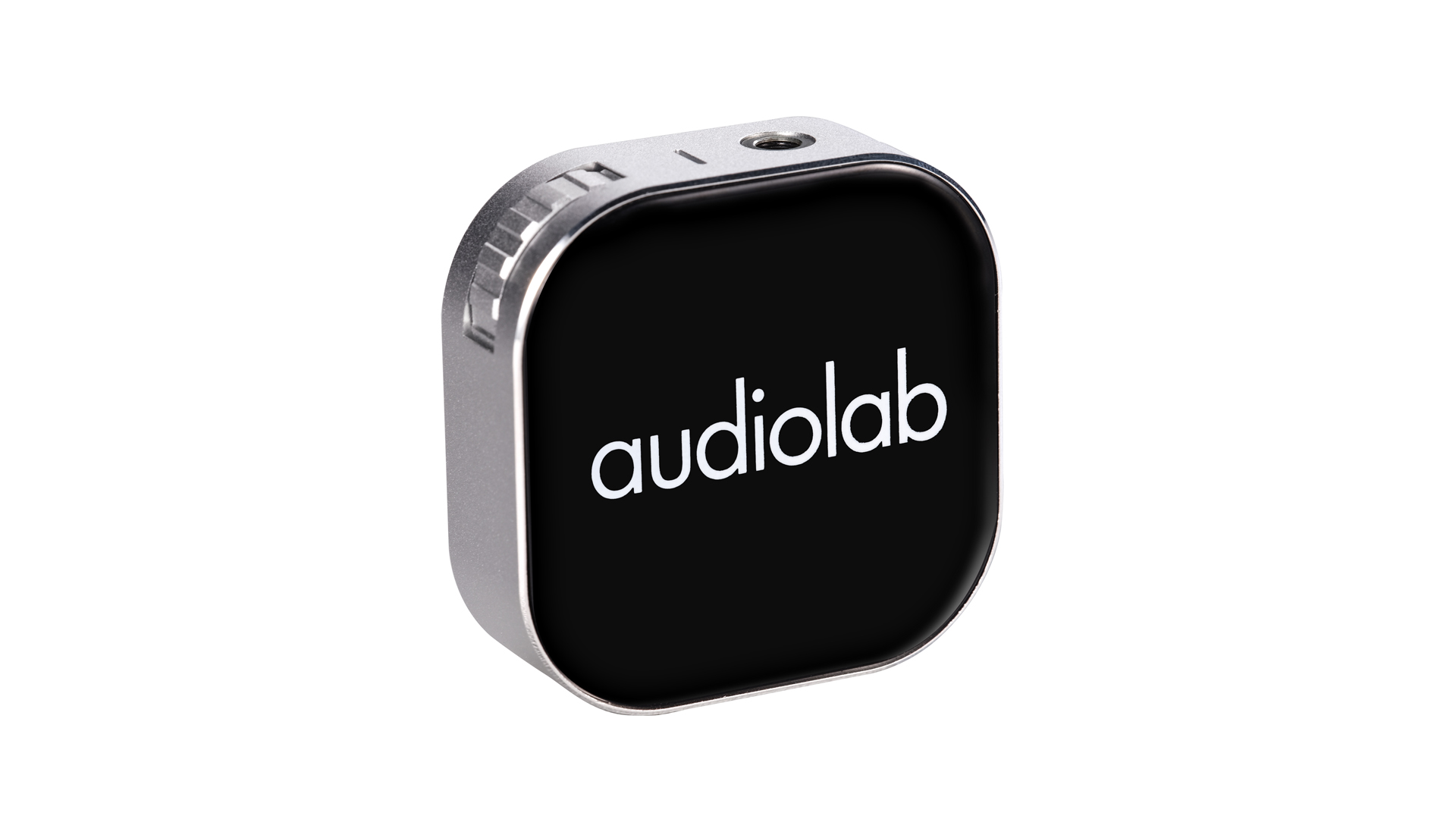What Hi-Fi? Verdict
A great way to improve the sound of your phone or laptop. We can’t think of a better alternative for portable use
Pros
- +
Sonic punch and refinement
- +
Compact and lightweight
- +
Wireless operation
Cons
- -
Battery life could be better
Why you can trust What Hi-Fi?
If you want to improve the sound of your phone or laptop, there aren’t many options. Until now our recommendation would have been restricted to adding a portable USB DAC such as the Cyrus Soundkey (£79) or Audioquest Dragonfly Red (£169). These are both excellent sounding devices and do their job brilliantly for the money, but they’re not ideal for truly portable use.
Both need an extra lead to work from a phone, meaning that you have to carry around an unwieldy combination of phone, adaptor cable and DAC. That’s quite a lot to fit in one pocket, no matter how small the DAC. However, Audiolab is offering an enticing alternative with its new M-DAC nano.
Build
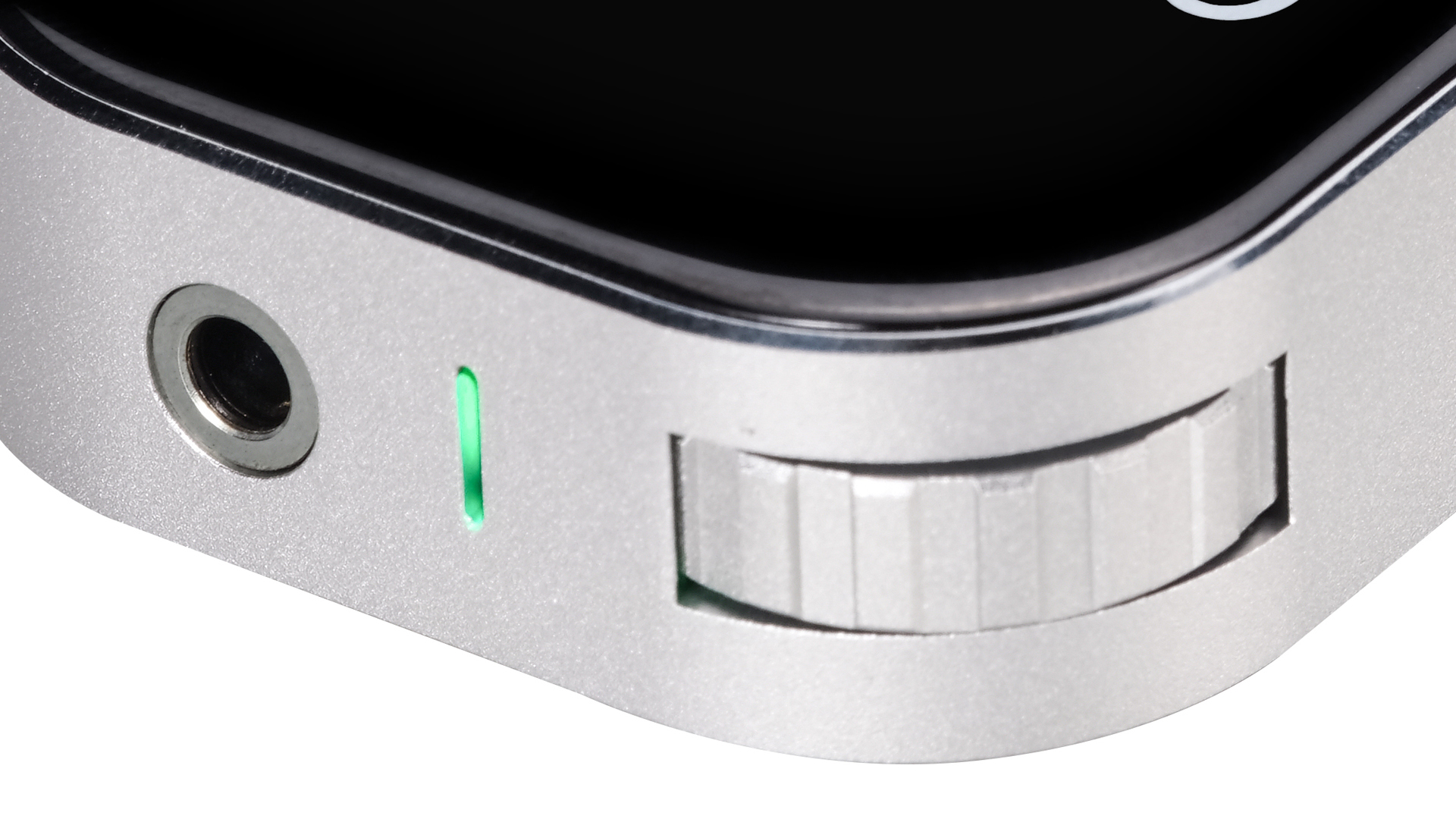
The M-DAC nano is a tiny unit, barely bigger than a custard cream biscuit. It’s light too, weighing in at just 28g. Being small and light are major plus points for portability, but the nano’s biggest advantage over rivals such as the Soundkey or the Dragonfly is that the connection with your device is done wirelessly, in this case by apt X Bluetooth (v4.2).
This wireless link removes the need to physically tether your device to the DAC, and means that, once on the move, the nano is considerably more convenient to use than its rivals. It can be in a different pocket to your source, for example, and positioned wherever is convenient to connect the leads from your headphones.
Audiolab even provides a faux leather belt-clip to make things easier. A built-in microphone allows hands-free calls when connected to a smartphone and can also be used to work Siri or Google assistant.
Features
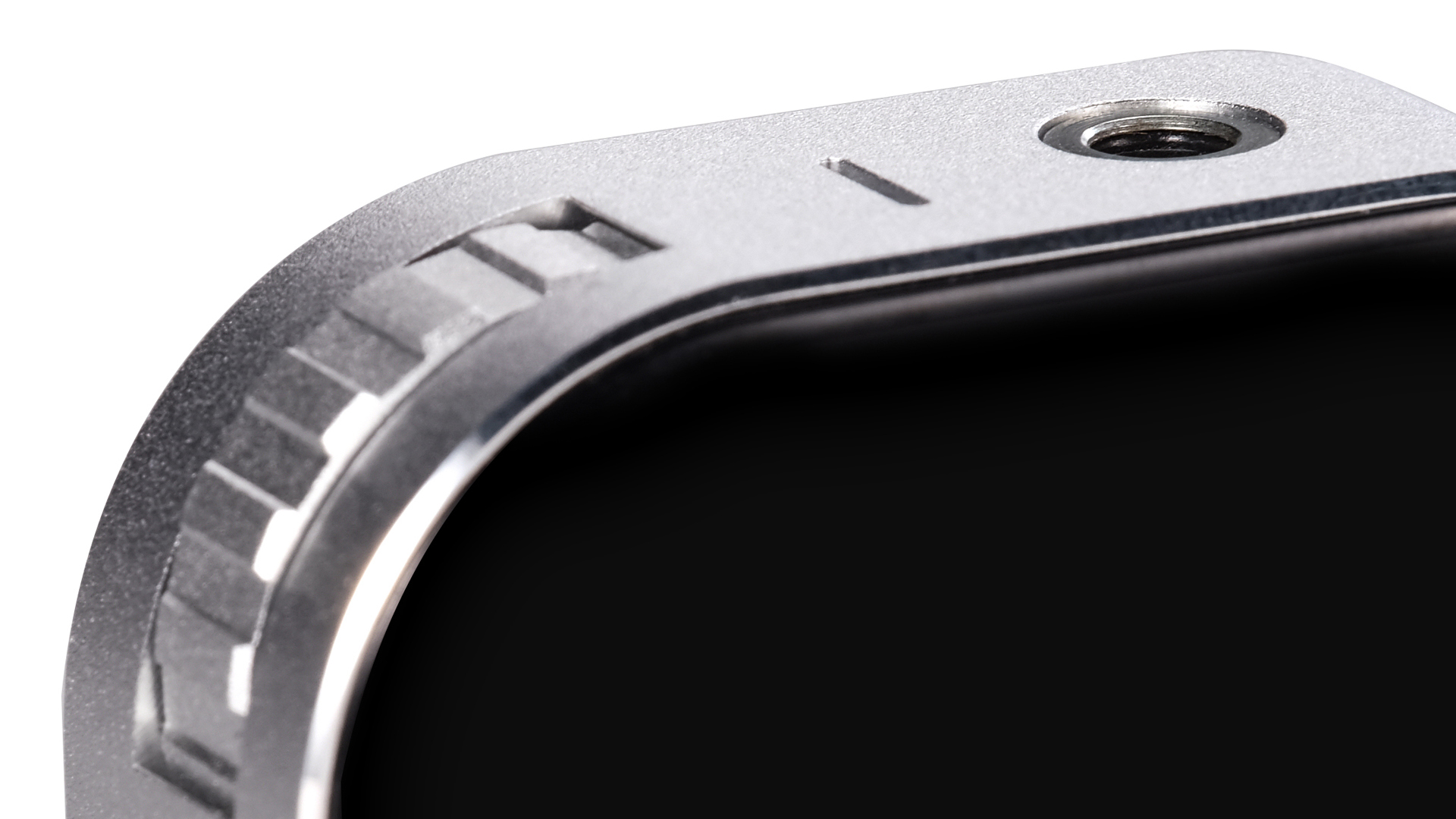
While its rivals will take power from your device – reducing power reserves in the process – the nano has a built-in rechargeable battery, which is claimed to give eight hours use from a full two-hour charge. The DAC will power down after 10 minutes of inactivity to preserve power, and there’s also a neat wireless charging pad included in the box.
Audiolab is no newcomer to digital-to-analogue conversion; the company has been making such products for decades, but it struck gold with the introduction of the original M-DAC. The nano is a very different device, though.
The latest hi-fi, home cinema and tech news, reviews, buying advice and deals, direct to your inbox.
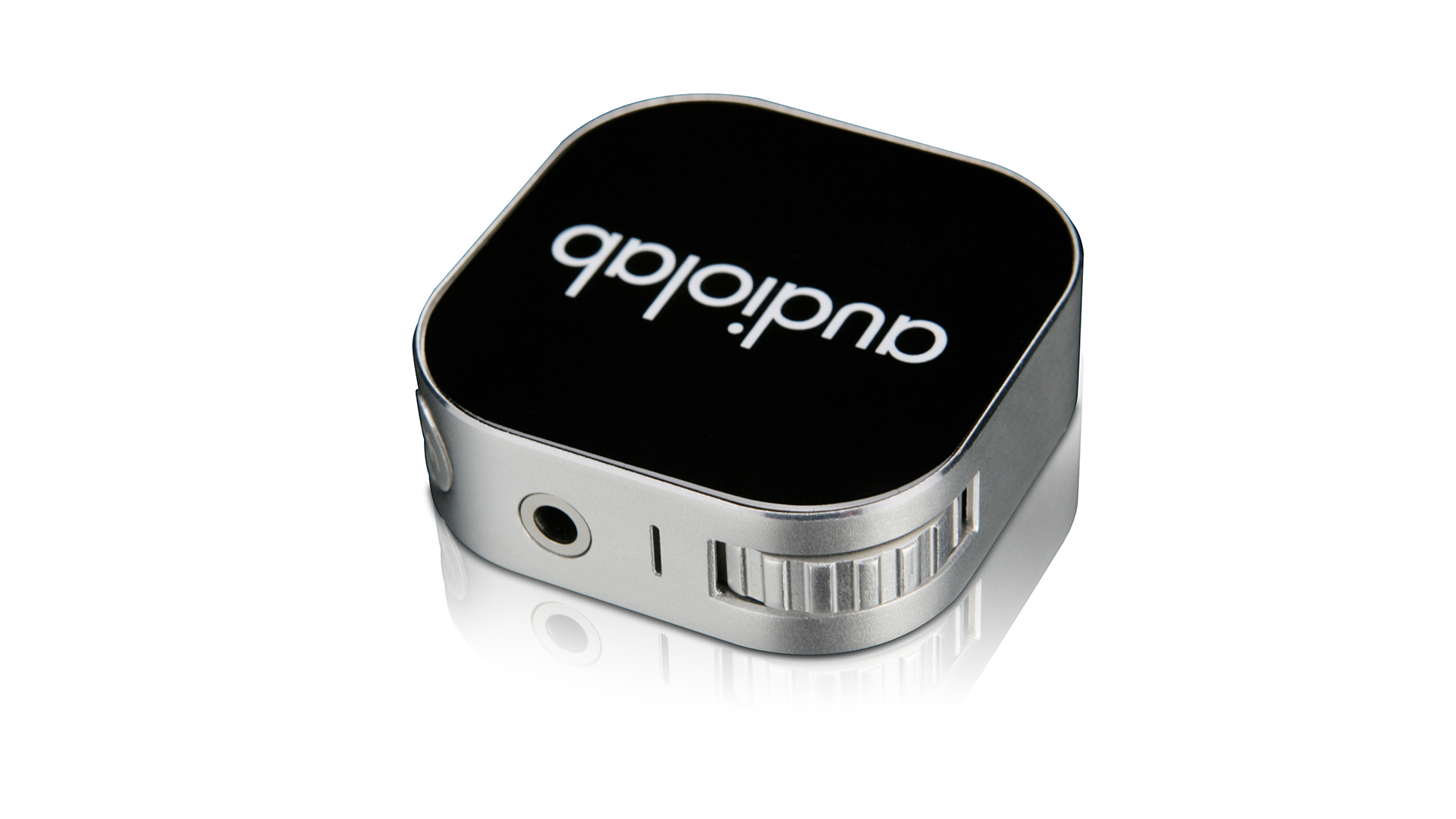
Bluetooth version 4.2
Output 30mW (per channel)
Impedance 8-300ohms
Charging time 2 hours
Playback time 8 hours
Dimension (hwd) 4.4 x 4.4 x 1.4cm
Weight 28g
Unlike its older, purely domestic brother, it uses a Cirrus Logic CS43130 DAC chip, something that’s designed for low power consumption applications. The specs make impressive reading, with the Audiolab able to up-sample the incoming signal to 32-bit/384kHz (at the press of a button) before converting to analogue.
Build quality is neat, though the requirement for low weight – important in a portable product – means that the casework, though well built and finished, doesn’t feel particularly substantial.
The controls are limited to a 64-step rotary volume cog that also controls the play/pause and skip functions depending on how many times it is pressed. The small button mark with ‘f’ also performs multiple functions from on/off to Bluetooth pairing and changing the sampling frequency.
Oddly, the nano defaults to upsampling off when you change source or your device awakes from sleep mode. It can prove a little frustrating once you’ve realised that upsampling sounds better and delivers a bolder, more spacious balance. Be aware though, when you make comparisons, there’s an increase in volume between the modes that favours upsampling. Also, battery life takes a 30 per cent hit due to the extra processing involved.
Sound
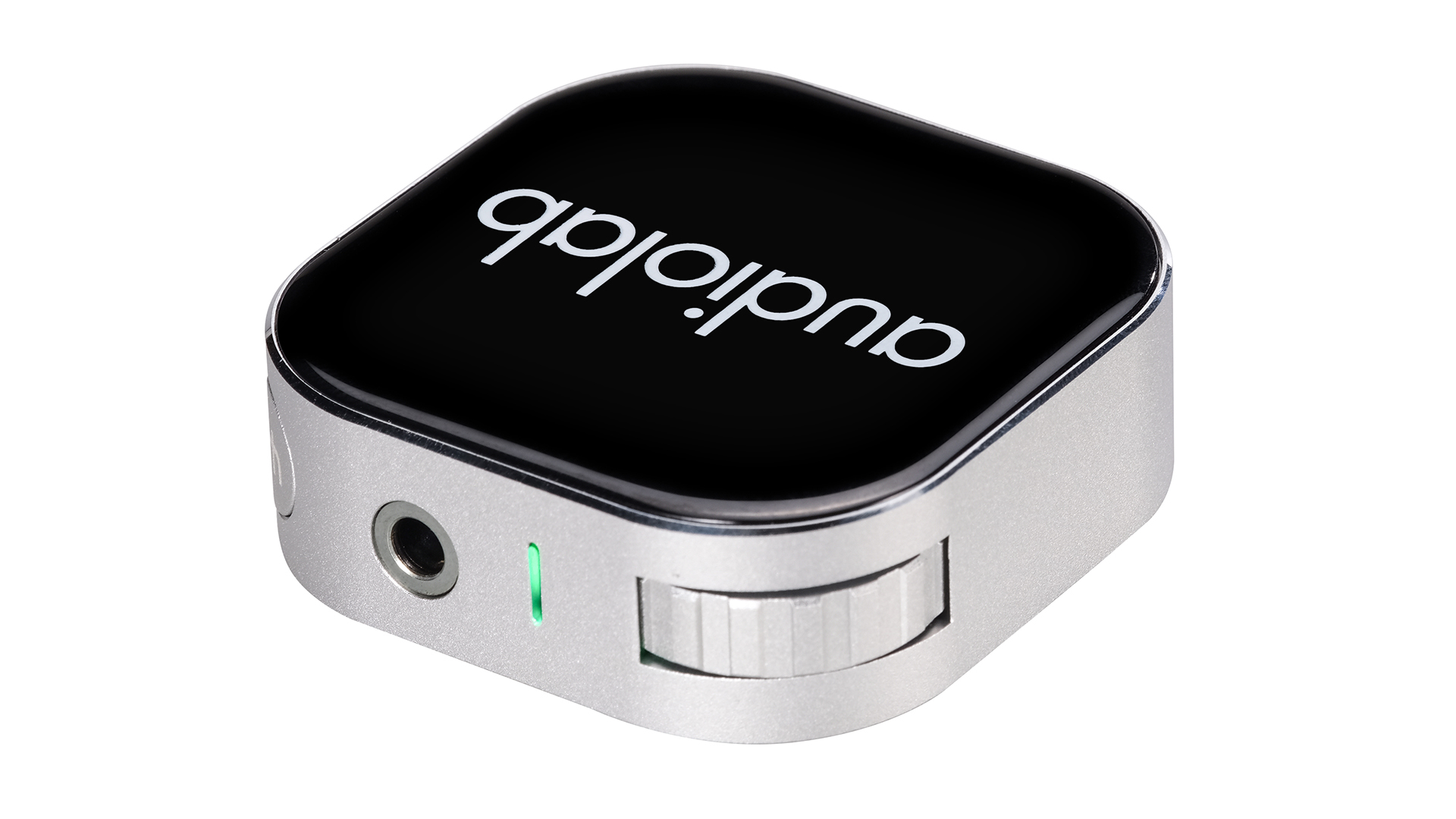
If we had doubts about the nano, they were about the effect Bluetooth may have on its sound quality. At almost £150, it has to offer a significant sonic upgrade from plugging the headphones straight into your device. Being reliant on Bluetooth, even of the apt X variety, could hamper that somewhat.
We use the DAC with our iPhone 6S Plus and Macbook, and it doesn’t take long to realise that it offers a notably superior sound to both devices. We use a range of headphones from AKG’s Y50s and the Sennheiser Momentum 2.0s to Beyerdynamics’ T1s – the nano supports 8-300 ohm loads.
The T1s in particular aren’t an obvious match, being pricey, domestic models, but they’re also immensely revealing, not to mention insensitive, so provide a stern load for the Audiolab to drive.
We listen to alt-J’s All This Is Yours and are impressed with the solidity of the presentation and the marked improvement in bass punch and power over our source components. Not only does the nano drive our headphones louder, but adds a notable degree of refinement to the sound. Detail levels are good too, with the Audiolab keeping a tight lease on the various instrumental strands through the album’s dense production.
We switch to Stravinsky’s The Rite Of Spring and the nano responds with wide ranging dynamics and a pleasing dose of rhythmic drive. Tonally, things are nicely balanced, with no part of the frequency range demanding undue attention.
It’s an exciting and entertaining performance, one that’s comparable to the likes of Audioquest’s Dragonfly Red. That’s some compliment, considering the Dragonfly is hardwired to your device and the Audiolab isn’t.
Verdict
If you’ve got a good pair of wired headphones and want to improve your sound on the move then the Audiolab M-DAC nano makes a mighty strong case. We can’t think of a similarly priced alternative that is so convenient, yet so capable.
SCORES
- Sound 5
- Features 4
- Build 4
MORE:
Read our Audioquest Dragonfly Red review
Read our Cyrus Soundkey review
What Hi-Fi?, founded in 1976, is the world's leading independent guide to buying and owning hi-fi and home entertainment products. Our comprehensive tests help you buy the very best for your money, with our advice sections giving you step-by-step information on how to get even more from your music and movies. Everything is tested by our dedicated team of in-house reviewers in our custom-built test rooms in London, Reading and Bath. Our coveted five-star rating and Awards are recognised all over the world as the ultimate seal of approval, so you can buy with absolute confidence.
